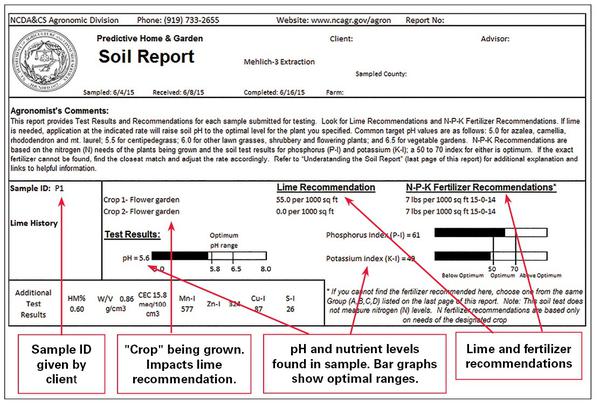Have you grown potatoes in the past and they turned out very small? If the answer is yes, then there will likely be a few reasons why this happened. One of the most important questions will be how much fertiliser was applied. But do you know which is the best type of fertiliser for growing potatoes?
The main mistake which many people make is not knowing the current N,P,K levels of the soil. Not knowing these figures means the soil may not contain the right amounts of these nutrients to grow a crop of large potatoes.
Potatoes need fertile soil to grow successfully – if you skip this your crop will suffer in size and development.
What is even more important is getting the ratio of N, P, and K correct for growing potatoes. If you add large amounts of the wrong nutrients like nitrogen (potatoes do not need large amounts of nitrogen) then you could be doing more harm than good- more on this later.
How to test soil for nutrients
You should carry out a soil analysis by either buying a soil test kit online or by sending a sample of your soil to an agricultural testing lab. I have found many of the kits online in which you do the analysis are hard to interpret and are a little vague. A more specific way to do soil analysis would be to get your local agri supplies stores to arrange it.
After collecting the soil sample you put it into the bag and send it off to be analysed. An accredited lab tests it and sends you the results. The accredited lab should email you the results within a couple of weeks.
What type of fertiliser?
Choosing the type of fertiliser for growing your potatoes is a matter of personal preference. There are many different ways you can help your potatoes grow, you can choose the organic route or standard chemical fertiliser.
Whichever way you choose to fertilise your crop (and you will need to apply some type of fertilizer to grow a good crop of potatoes) you need to decide if you are going to apply your fertilizer in a general way or if you want to add it in a specific way.
Adding farmyard manure/ compost for potatoes

For those who want to add fertiliser in a general way, I would recommend adding a wheelbarrow of farmyard manure or compost per 4m2 in autumn digging it in well, and letting it sit until spring when you can rotavate it to a fine tilth before planting.
I have an article that shows you how you can make your own fertiliser for potatoes.
More specific knowledge
For those who want to apply more specific knowledge to adding chemical fertiliser, the first thing you should do is carry out soil analysis.
This begins by collecting a soil sample and either testing it yourself using a soil test kit bought online or by sending in your sample to your local Department of Agriculture for them to analyze.
Collecting your soil sample
To take your sample in a small area (less than a couple of m2) you simply dig down 4-6 inches and grab a handful of soil.
For larger areas, you make an imaginary x from corner to corner of your plot and take a handful every few steps along the two lines.
Mix these sub-samples together and take one sample from it. This will mean your small sample is made up of lots of small parts from all over your plot.
Reading your soil analysis report
When you receive your soil analysis results or complete your test you will have figures which relate to the amounts of Nitrogen (N) Phosphate (P) and Potash (K) that are present in your soil.
Now you have real data on how much of these nutrients are present, you should then consult the fertilizer manual I have linked to below to find out how much more of these nutrients you need to add to your soil for the crop you have chosen to grow.
These fertiliser articles are very useful reading. https://www.ers.usda.gov/topics/farm-practices-management/crop-livestock-practices/
Here is some information on a soil analysis test: https://efotg.sc.egov.usda.gov/references/public/WI/Soil_Quality_Test_Kit_Guide.pdf
This is typical of the layout of the soil analysis report you receive.

Using this report you will be able to accurately apply the correct amount of nutrients for the crop you have chosen.
What is the best fertilizer for growing potatoes?
The best fertilizer for growing potatoes is one that has relatively low Nitrogen (N) and is at least twice as high in Phosphorous (P) and Potash (K). A good example of a suitable potato fertilizer ratio would be a 5-10-10. A developing potato plant should have lower Nitrogen to prevent the top from becoming too lush and susceptible to diseases such as potato blight. The higher P and K are necessary for the potato tubers to grow large and healthy.
I have included an example of a good potato fertilizer in the link below. It is higher in P and K and lower in Nitrogen. This is essential for the proper development of your potatoes – especially for growing larger potatoes and keeping the potato tops size in check.
This potato fertilizer is: Urban Farmer Organic Potato Fertilizer with an N-P-K ratio of 3-6-6
Simply scatter the fertilizer over the tilled ground at planting time, or lay a trickle of fertilizer in the bottom of the trench you are planting into. As the season progresses you can check how they are growing to see if they need further application. Good luck!
I have made a short video of this article to act as a summary of the main points



